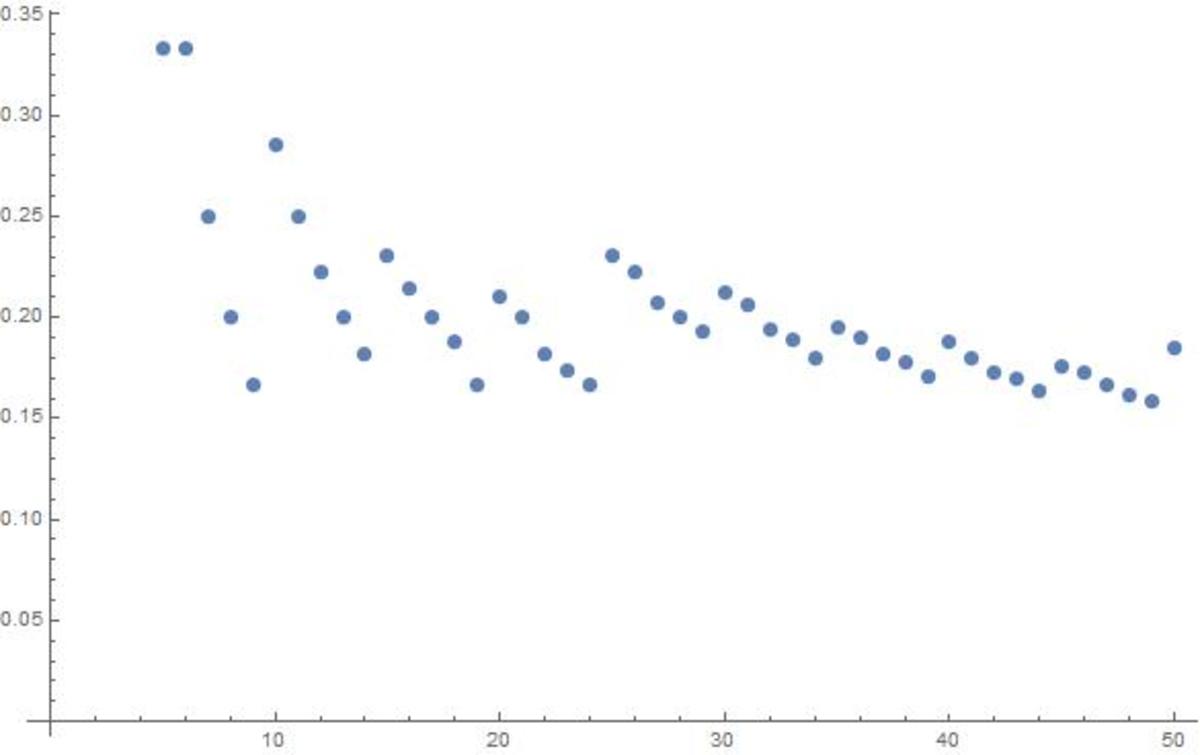Proportion of trailing zeros of factorials
. Note that of the digits of this number are trailing zeros
and again of the digits are trailing zeros
which is only trailing zeros (the zero in the hundreds place does not count as trailing.)
Consider the proportion of trailing zeros of
Which statement is correct?
: is the largest number whose factorial is trailing zeros and none have a higher proportion
: Other factorials beyond are trailing zeros, but none have a higher proportion
: There are a finite amount of numbers whose factorials are more than trailing zeros
: There are an infinite amount of numbers whose factorials are more than trailing zeros
This section requires Javascript.
You are seeing this because something didn't load right. We suggest you, (a) try
refreshing the page, (b) enabling javascript if it is disabled on your browser and,
finally, (c)
loading the
non-javascript version of this page
. We're sorry about the hassle.
Here is a M a t h e m a t i c a code that computes the proportions
Table[Last@@Select[FactorInteger[k!],#[[1]]==5&]/IntegerLength[k!],{k,5,50}]3 1 , 3 1 , 4 1 , 5 1 , 6 1 , 7 2 , 4 1 , 9 2 , 5 1 , 1 1 2 , 1 3 3 , 1 4 3 , 5 1 , 1 6 3 , 6 1 , 1 9 4 , 5 1 , 1 1 2 , 2 3 4 , 6 1 , 1 3 3 , 9 2 , 2 9 6 , 5 1 , 3 1 6 , 3 3 7 , 3 4 7 , 3 6 7 , 3 7 7 , 3 9 7 , 4 1 8 , 2 1 4 , 1 1 2 , 4 5 8 , 4 7 8 , 1 6 3 , 5 0 9 , 5 2 9 , 5 3 9 , 5 5 9 , 5 7 1 0 , 2 9 5 , 6 1 , 3 1 5 , 6 3 1 0 , 6 5 1 2
here is a graph of the proportions of the first 50 factorials
and the graph of 1000 factorials